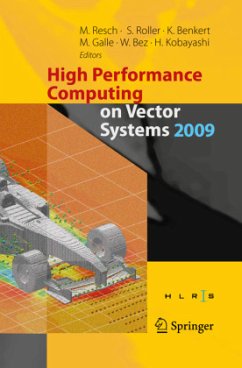This book covers the results of the Tera op Workbench, other projects related to High Performance Computing, and the usage of HPC installations at HLRS. The Tera op Workbench project is a collaboration between the High Performance C- puting Center Stuttgart (HLRS) and NEC Deutschland GmbH (NEC-HPCE) to s- port users in achieving their research goals using High Performance Computing. The rst stage of the Tera op Workbench project (2004-2008) concentrated on user's applications and their optimization for the former ag ship of HLRS, a - node NEC SX-8 installation. During this stage, numerous individual codes, dev- oped and maintained by researchers or commercial organizations, have been a- lyzed and optimized. Within the project, several of the codes have shown the ability to outreach the TFlop/s threshold of sustained performance. This created the pos- bility for new science and a deeper understanding of the underlying physics. The second stage of the Tera op Workbench project (2008-2012) focuses on c- rent and future trends of hardware and software developments. We observe a strong tendency to heterogeneous environments on the hardware level, while at the same time, applications become increasingly heterogeneous by including multi-physics or multi-scale effects. The goal of the current studies of the Tera op Workbench is to gain insight in the developments of both components. The overall target is to help scientists to run their application in the most ef cient and most convenient way on the hardware best suited for their purposes.
Bitte wählen Sie Ihr Anliegen aus.
Rechnungen
Retourenschein anfordern
Bestellstatus
Storno

